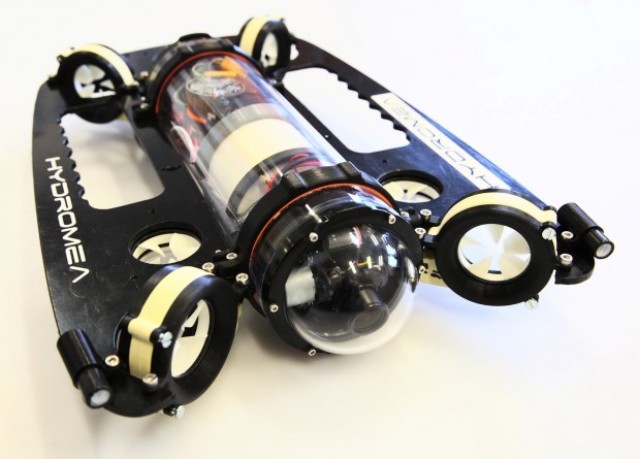The company Hydromea has introduced an underwater robot with a camera and wireless control using optical signals. Wireless communication allows you to control the robot and receive video from it at a distance of up to 50 meters.
Today, there are many civilian drones: drones for shooting from the air, radio-controlled models of cars and ships. There are also underwater robots, but they are much smaller, largely due to technical features. The fact is that radio waves are extremely weak when passing through water, so it is impossible to actually implement radio communication between the operator's console and the underwater robot. As a simple and cheap alternative, a cable is usually used that transmits signals, and often power. But this limits the range of the robot, and can also cause the cable to catch on another underwater object.
There are also projects of wireless controlled underwater robots. As a rule, they use acoustic signals that propagate well in the water. This principle of signal transmission is used both in research prototypes and in serial devices . But so far, high-speed underwater communication has not been achieved with the help of acoustic communication.
The company Hydromea, which previously developed light transceivers for underwater communication, has introduced a robot that uses such a device for two-way high-speed communication with the operator. The robot has a flat body with a sealed transparent capsule in the middle. It contains a tiltable camera, an optical transceiver, a battery, and other electronics. In the side parts of the body, seven screws are installed, allowing the robot to move in any direction like a multicopter flying in the air.
The developers note that the transceiver allows you to transmit a signal at a speed of up to 10 megabits per second. This allows you to broadcast real-time video in HD resolution from the robot to the operator's console. Since the transceiver emits light at a wide angle, it is not necessary to accurately orient the operator's console in the direction of the robot to maintain communication. At the moment, the communication range is 50 meters in ideal conditions, but the developers plan to bring it to 100 meters.
The robot is 70 centimeters long and weighs 7 kilograms. It runs from six to eight hours on a single battery charge. While the price and date of the start of sales of the device are unknown, but the company plans to launch it into mass production next year.
The researchers suggest using other operating principles for communication with underwater vehicles. For example, in 2018, American engineers showed a prototype of a communication system between devices in the air and water that uses acoustic and radio signals: an underwater vehicle uses acoustic signals to create vibrations on the surface of the water, and an aircraft reads them using radar.
Grigory Kopiev

